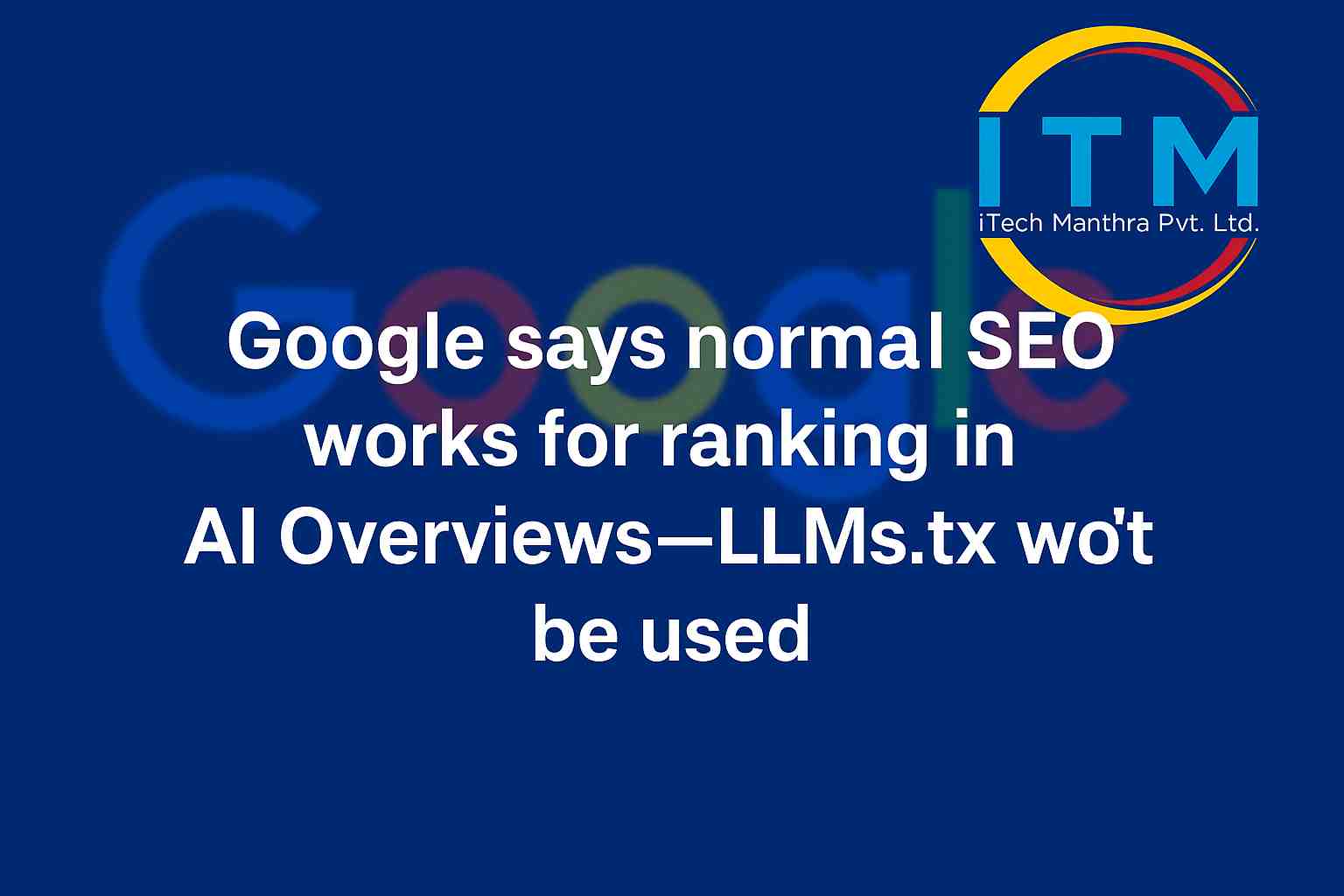Introduction
Ever wondered whether you need a brand-new SEO playbook just to show up in AI-powered overviews from Google? You’re not alone. With all the buzz around AI SEO, AEO, GEO, and that mysterious “LLMs.txt” file, it’s easy to feel overwhelmed.
Here’s the scoop: Google says normal SEO the kind you’ve already been doing is your ticket to ranking in its AI-based Overviews. And no, you don’t need to worry about LLMs.txt. Let’s break it down and see why this matters right now, especially as AI Overviews start popping up in more search results.
Q&A: What You Need to Know
H2: What makes normal SEO ranking work for AI Overviews?
Normal SEO ranking think well‑written content, good page speed, mobile responsiveness, and structured data is the same foundation Google uses to choose which pages appear in AI Overviews. Gary Illyes from Google has confirmed that there’s no separate system or new file needed.
Related Information: How Google’s Word Coach Boosts Engagement.
H2: Why doesn’t Google use LLMs.txt for AI Overviews?
You might have heard rumors about an “LLMs.txt” file guiding AI bots. But Google clarified: LLMs.txt won’t be used for AI Overviews. So all that talk about creating a special file to qualify for AI search is just noise.
H2: Does content quality matter more than how it was created?
Absolutely. Google has said they don’t care whether your content is written by a human or AI what matters is if it’s high-quality, helpful, and reliable. “We are not trying to differentiate based on origin,” Illyes explained. This aligns with seo google best practice: focus on value, not creation method.
H3: Is AI SEO different from traditional SEO?
Not really. While the SEO world invented terms like AEO (Answer Engine Optimization) and GEO, Google says they’re unnecessary. Standard SEO practices (good titles, meta descriptions, internal linking, structured data) remain effective for AI Overviews.
H3: How does AI choose what content to show?
AI Overviews rely on two key tech steps:
- Query Fan-Out – AI expands the user’s query into related sub-questions to provide richer, more thorough answers.
- Grounding – It cross-checks information against Google’s search index to ensure factual accuracy.
Google’s system still values traditional ranking signals; it’s just layered on top with AI mechanisms for freshness and precision.
Expert Voice
As Kenichi Suzuki summarized Illyes’ remarks and alos posted LinkedIn:
“To get your content to appear in AI Overview, simply use normal SEO practices. You don’t need GEO, LLMO or anything else.” This one posted in Reddit.
And as Glenn Gabe observed:
“Yes, this is obvious for many, but glad he decided to say it.”
Similar Information: Understanding SEO: A Complete Beginner’s Guide.
FAQ: Quick Answers
A: Nope. Focus on strong google seo basics good content, site speed, mobile-friendliness, schema and you’re set.
A: No need. Google confirmed it won’t be used for AI Overviews ranking.
A: Not at all. Google says origin doesn’t matter only quality and helpfulness do.
A: Not fully. AI Overviews supplement search with immediate answers, but traditional ranking still drives traffic to pages.
A: Yes those traditional SEO signals remain essential for ranking seo google style.
Conclusion
So in short: stick with what works. Great content, solid seo ranking google fundamentals, fast pages, mobile-friendliness, and helpful info that’s your formula for ranking both in classic search and in AI Overviews. You don’t need GEO, AEO, or LLMs.txt just focus on delivering value.
Have thoughts or experiments of your own? I’d love to hear them drop a comment, ask a question, or share your experience.
